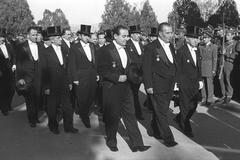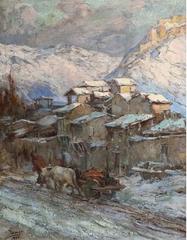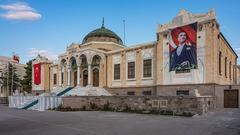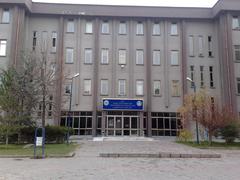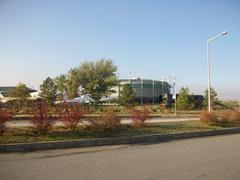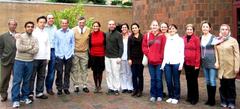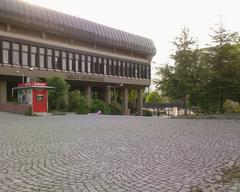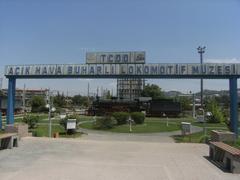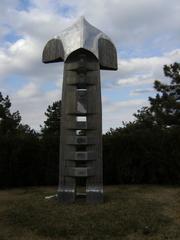Cebeci Asri Cemetery: Visiting Hours, Tickets, and Historical Significance in Ankara
Date: 03/07/2025
Introduction
Cebeci Asri Cemetery (Cebeci Asri Mezarlığı) is more than just a burial ground—it is a living testament to Ankara’s journey from an Ottoman town to the modern capital of Turkey. Established in the early Republican era, Cebeci Asri is the city’s first modern, centralized cemetery and stands as an enduring symbol of secularism, inclusivity, and modernization. Spanning over 630,000 square meters in the Altındağ district, the cemetery welcomes visitors with its orderly rows, wide tree-lined avenues, and a tranquil, park-like atmosphere. The site accommodates Muslim, Christian, and Jewish burials, a reflection of Ankara’s diverse population and cosmopolitan spirit.
Cebeci Asri Cemetery is the final resting place for more than 220,000 individuals, including prominent political leaders, cultural icons, and intellectuals who have shaped modern Turkey. The cemetery’s heritage is further enriched by digital innovations such as the MEBİS grave-finding system, making navigation convenient for visitors. Centrally located and easily accessible by public transportation, admission to the cemetery is free, and it is open daily, making it an excellent destination for anyone interested in history, culture, or remembrance.
Historical Background and Evolution
Establishment and Early Planning
Cebeci Asri Cemetery was conceived in 1935, soon after Ankara became Turkey’s new capital. The need for a modern burial ground led to an international architectural competition, which was won by German architect Martin Elsaesser. Elsaesser’s vision was realized by 1941, establishing a cemetery that broke from Ottoman tradition in favor of an egalitarian, secular, and organized layout (METU Thesis; Bilkent Repository).
Design Philosophy and Layout
The cemetery’s design was intended to reflect the ideals of the new Republic. Unlike the organic, often crowded Ottoman cemeteries, Cebeci Asri features symmetry, order, and accessibility. Its layout includes separated sections for Muslim, Christian, and Jewish burials, wide walkways, and abundant greenery, emphasizing both inclusivity and a serene environment (Touristlink).
Expansion and Adaptation
As Ankara’s population grew, Cebeci Asri expanded northward in 1958. Until the opening of Karşıyaka Cemetery in 1970, it was the city’s main burial site. Today, it serves families with existing plots while new burials are increasingly rare (Mezar Bakım Karşıyaka; METU Thesis).
Social and Cultural Significance
Cebeci Asri Cemetery’s pluralistic design mirrors the Republic’s ideals. It houses the graves of many influential figures, including investigative journalist Uğur Mumcu, and is a place for collective memory and annual commemorations (Geç Kalmış Yolcu; Touristlink).
Technological and Administrative Developments
The Ankara Metropolitan Municipality manages the cemetery, maintaining security, landscaping, and plot allocation. Since 2000, the MEBİS digital system allows visitors to locate graves through interactive kiosks at the entrance (Wikipedia; Geç Kalmış Yolcu).
Visiting Cebeci Asri Cemetery
Visiting Hours
- Open daily: 8:00 AM to 6:00 PM
- Tip: Visit during daylight to fully appreciate the ambiance and for safety.
Ticketing Information
- Admission: Free for all visitors.
- Burial plot fees: As of 2025, new plots cost between 25,000 and 30,000 Turkish Lira. Plot arrangements are managed at the administrative office near the third gate (Geç Kalmış Yolcu).
Accessibility and Facilities
- Paths: Paved and largely wheelchair accessible.
- Amenities: Shaded benches, rest areas, restrooms near main entrance.
- Navigation: Interactive MEBİS kiosks at entrances for grave locations.
Travel Tips
- Getting There: Accessible by public transport (buses, taxis) from Ankara’s city center.
- Best Seasons: Spring and autumn for pleasant weather and vibrant scenery.
- Photography: Allowed except for mourners or during ceremonies; the landscape and monuments offer excellent photo opportunities.
Nearby Attractions
- Anıtkabir: Atatürk’s Mausoleum.
- Museum of Anatolian Civilizations: Renowned archaeological collections.
- Ulus District: Historic core of Ankara.
Special Events and Guided Tours
Occasional guided tours highlight the cemetery’s history and notable burials. The Ankara Metropolitan Municipality and local cultural organizations host commemorative events, especially for significant anniversaries.
Notable Burials and Community Representation
Cebeci Asri Cemetery is the resting place of many Turkish luminaries:
- Uğur Mumcu: Iconic investigative journalist.
- Hüseyin Kocadağ: Distinguished police chief.
- Other Notables: Artists, academics, and political leaders who shaped modern Turkey (Wikipedia List of Burials; ReviewEuro).
The cemetery’s inclusive zoning—Muslim, Christian, and Jewish sections—reflects Ankara’s religious and social diversity. The fourth gate provides access to non-Muslim areas, further emphasizing its pluralistic ethos.
Layout and Architecture
Zoning and Sections
- Multi-faith design: Separated sections for Muslims, Christians, Jews (Hatlas Travel).
- Orderly arrangement: Clear pathways, signage, and benches.
- Greenery: Mature trees, seasonal flowers, and lawns create a tranquil setting.
Architectural Features
- Grave variety: From simple headstones to elaborate monuments, with Turkish motifs and personalized inscriptions.
- Professional maintenance: Ongoing restoration and grave care services.
Digital Innovation
- MEBİS System: Grave-finding kiosks and online tools aid visitors (AnkaraKabir).
Preservation and Maintenance
Most of the cemetery is well-maintained, though some sections may show signs of neglect or overgrowth. Security is present, but improvements in surveillance and signage could further enhance the visitor experience (ReviewEuro).
Visitor Experience: Etiquette, Facilities, and Practical Tips
- Respect silence and dress modestly.
- Photography: Permitted; avoid photographing mourners or ceremonies.
- Seasonal tips: Bring water and sun protection in summer.
- Accessibility: Paved walkways, wheelchair access in most areas; staff assistance available.
- Restrooms and water fountains near main entrance.
Frequently Asked Questions (FAQ)
Q: What are the visiting hours?
A: Daily from 8:00 AM to 6:00 PM.
Q: Is there an entrance fee?
A: No. Admission is free.
Q: Are guided tours available?
A: Occasionally, through local tourism offices or the municipality.
Q: Is the cemetery wheelchair accessible?
A: Most sections are accessible; some older areas may have uneven terrain.
Q: How can I find a specific grave?
A: Use the MEBİS kiosks or ask cemetery staff at the entrance.
Q: Can I visit on public holidays?
A: Yes, though hours may vary; check official sources beforehand.
Summary and Final Visitor Tips
Cebeci Asri Cemetery is a cornerstone of Ankara’s history and a living memorial to Turkey’s modern transformation. Its harmonious blend of landscape, multi-faith inclusiveness, and technological innovation offers a unique and meaningful experience. Free admission, accessible facilities, and proximity to major Ankara landmarks make it an essential stop for history enthusiasts, cultural travelers, and families alike.
Visitor Tips:
- Plan visits during daylight for safety and ambiance.
- Use the MEBİS system for easy navigation.
- Check the Ankara Metropolitan Municipality website for special events or updates.
- Combine your visit with nearby attractions for a comprehensive cultural day.
- Download the Audiala app for interactive maps and guided tours.
References and Official Sources
- Ankara Metropolitan Municipality
- METU Thesis
- Bilkent University Repository
- Mezar Bakım Karşıyaka
- Touristlink
- Geç Kalmış Yolcu
- Wikipedia
- ReviewEuro
- AnkaraKabir
- Hatlas Travel
- Commonwealth War Graves Commission
Images:
- Entrance gate, multi-faith sections, martyrs’ area, and cemetery map with descriptive alt tags recommended.
For further planning, download the Audiala mobile app for offline maps and guided tours. Stay connected on social media for the latest updates, tips, and events.
